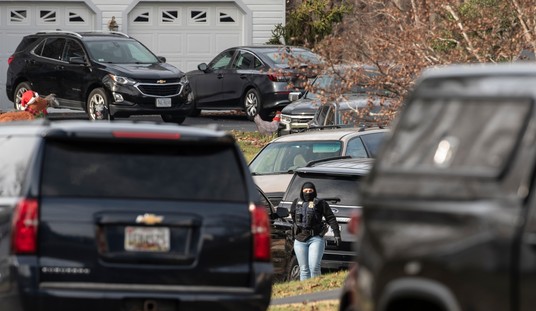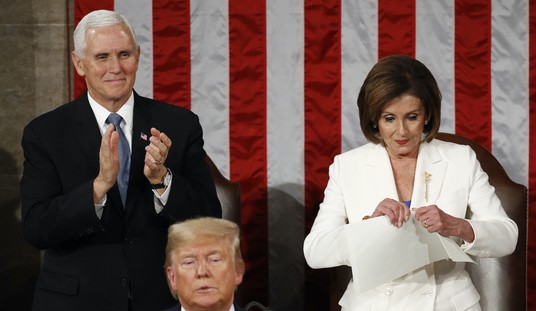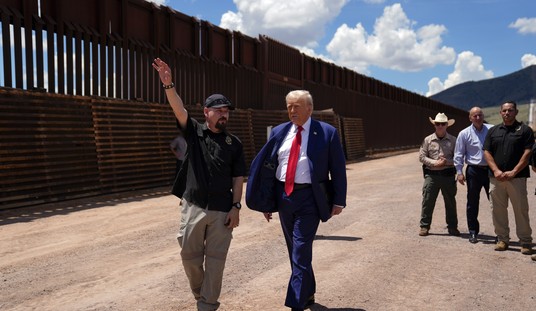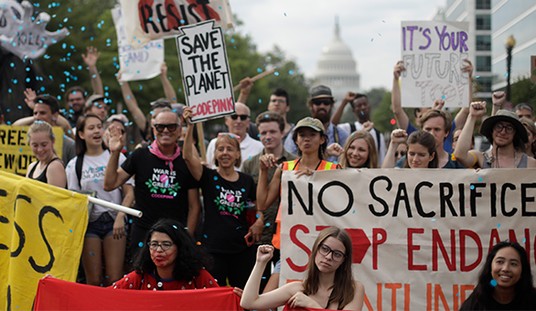Yesterday “Chairman of Iran’s Expediency Council” Akbar Hashemi Rafsanjani croaked. Good riddance. The world is a little bit brighter place today because he’s now being basted on a spit in Hell. While useful idiots in the West portrayed Rafsanjani as a “moderate,” he was only “moderate” by comparison to the usual psychopaths Iran chooses to govern it. During Rafsanjani’s entire reign, Iran was officially listed as a state sponsor of terror. He not only mastered domestic terror, hanging, torturing, and imprisoning political opposition, he was an enthusiastic practitioner of terrorism around the world. This is not news. The CIA has issued a public report on his antics:
The CIA linked Rafsanjani to terrorist plots as early as 1985, when he was serving as speaker of parliament. In a February 15, 1985, memo, the agency assessed that “Iranian-sponsored terrorism is the greatest threat to US personnel and facilities in the Middle East…Iranian-backed attacks increased by 30 percent in 1984, and the numbers killed in Iranian-sponsored attacks outpace fatalities in strikes by all other terrorist sponsors. Senior Iranian leaders such as Ayatollah Montazeri,…Prime Minister [Mir Hossein Mousavi], and Consultative Assembly speaker Rafsanjani are implicated in Iranian terrorism.”
In August 1990, the CIA’s Directorate of Intelligence authored a more in-depth assessment titled “Iranian Support for Terrorism: Rafsanjani’s Report Card.” According to the agency, the regime’s sponsorship of terrorist activities had continued unabated since the death of Ayatollah Khomeini the previous June: “Although Rafsanjani has sought to improve relations with some Western nations since directly assuming the presidency last August, events of the past year prove that Tehran continues to view the selective use of terrorism as a legitimate tool.” Iranian terrorist attacks targeting “enemies of the regime” over the previous year “were probably approved in advance by President Rafsanjani and other senior leaders,” the report assessed, but “the planning and implementation of these operations are…probably managed by other senior officials, most of whom are Rafsanjani’s appointees or allies.” The CIA concluded that “Rafsanjani and [Supreme Leader] Khamenei would closely monitor and approve planning for an attack against the US or Western interests.”
Looking forward, CIA analysts assessed in 1990 that “Rafsanjani and other Iranian leaders will continue selectively using terrorism as a foreign policy tool to intimidate regime opponents, punish enemies of Islam, and influence Western political decisions.” Two years later, such assessments appeared prescient. In 1992, the CIA recorded a long list of Iranian terrorist activities, from attacks targeting Israeli, Saudi, and American officials in Turkey, to plots targeting Jewish emigres from the former Soviet Union and antiregime dissidents abroad. Most spectacular, however, were the 1992 bombing of the Israeli embassy in Buenos Aires (conducted with help from the regime’s Lebanese proxy Hezbollah) and the public assassination of four Iranian dissidents at the Mykonos restaurant in Berlin that same year.
Germany’s highest criminal court would later reject claims that the Mykonos attack was executed by “mavericks,” concluding in a 1997 ruling that “the assassination [was] put into action much more through the powers in Iran.” By identifying Rafsanjani and the Supreme Leader himself as the orchestrators of the plot, the court found that “Iranian powers not only allow terrorist attacks abroad…they themselves set in action such attacks.” Whenever the regime encountered political opposition, the court determined, its solution was simply to have the opponents “liquidated.”
Iran and Hezbollah soon struck again in Argentina. According to local investigators, a subgroup of Iran’s Supreme National Security Council (the Committee for Special Operations) made the final decision to approve the 1994 bombing of the AMIA Jewish community center in Buenos Aires. That meeting reportedly included Khamenei, Rafsanjani, Intelligence Minister Ali Fallahian, and Foreign Minister Ali Akbar Velayati. Also present were Iranian intelligence agents Mohsen Rabbani and Ahmad Asghari, who had firsthand knowledge of Argentina and advised the committee about target selection, the local logistical and intelligence support networks that could be used to facilitate the attack, and the country’s political and security environment at the time.
Seventeen years ago this week, Iranian agents teamed up with Lebanese and Saudi Hezbollah operatives to bomb the Khobar Towers military housing complex in Saudi Arabia’s Eastern Province. The bombing, the largest nonnuclear explosion then on record (it was felt twenty miles away in Bahrain), killed 19 U.S. Air Force personnel and wounded 372 more, along with numerous Saudi civilians and other nationals.
Naturally, the State Department did its best kowtow.
A U.S. State Department official offered condolences over the passing of Chairman of Iran’s Expediency Council Akbar Hashemi Rafsanjani.
The official described Rafsanjani as a “prominent figure” throughout the history of the Islamic Republic of Iran. “We send our condolences to his family and loved ones,” the official said in a statement.
Not a word in here about Rafsanjani’s bloody hands or his ugly legacy of death and oppression or his pathological anti-Semitism.
No word yet if Joe Biden will attend the funeral.












Join the conversation as a VIP Member